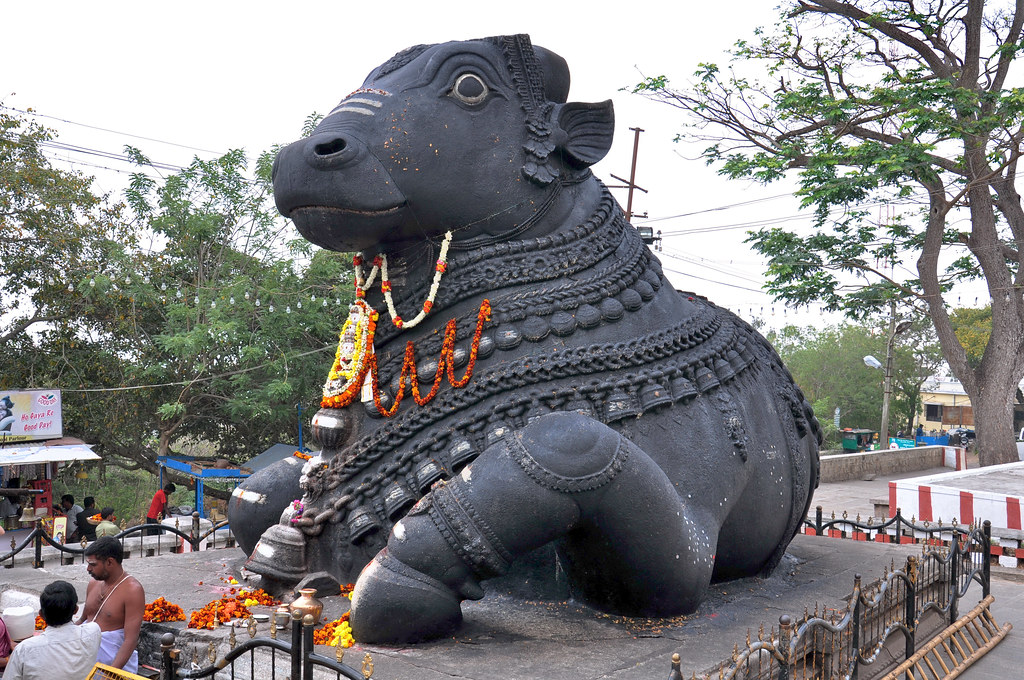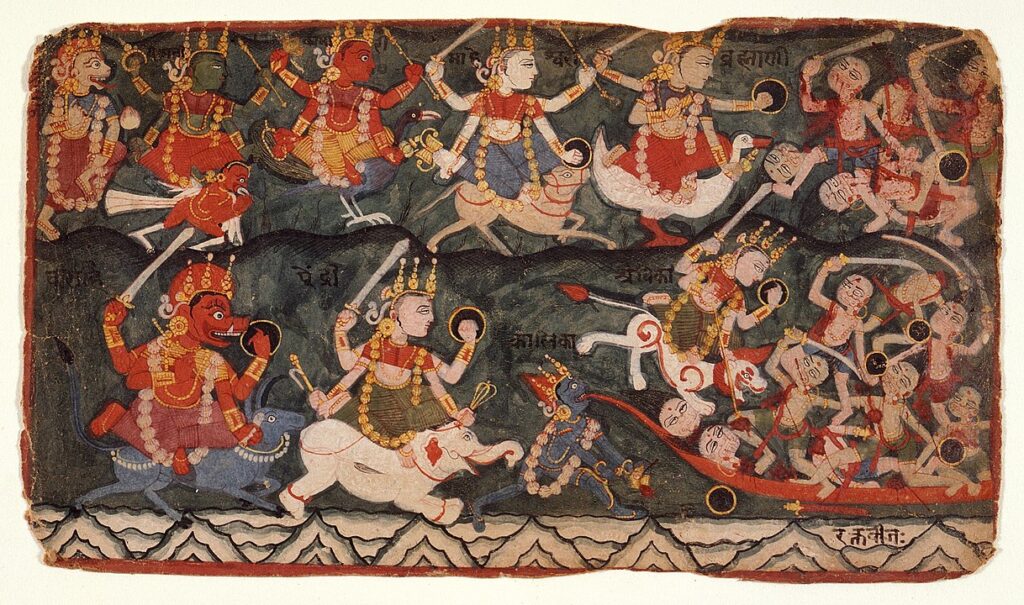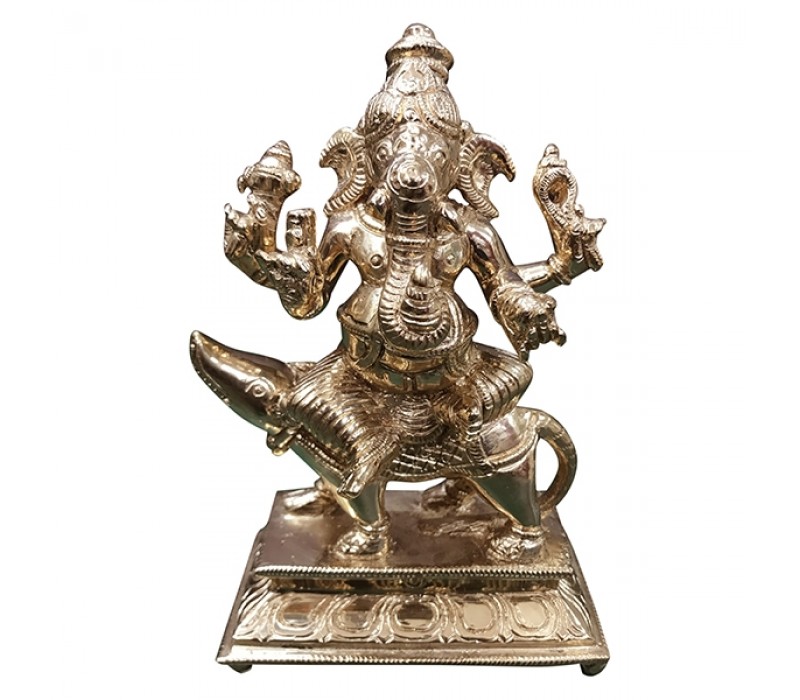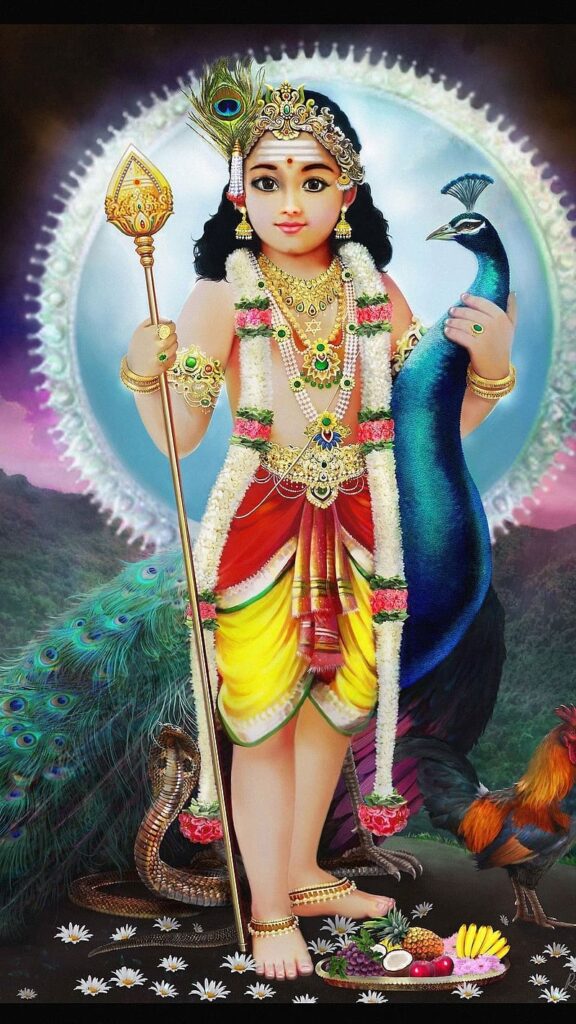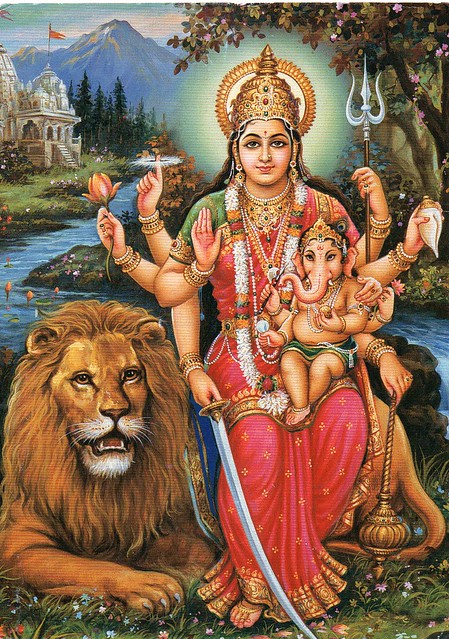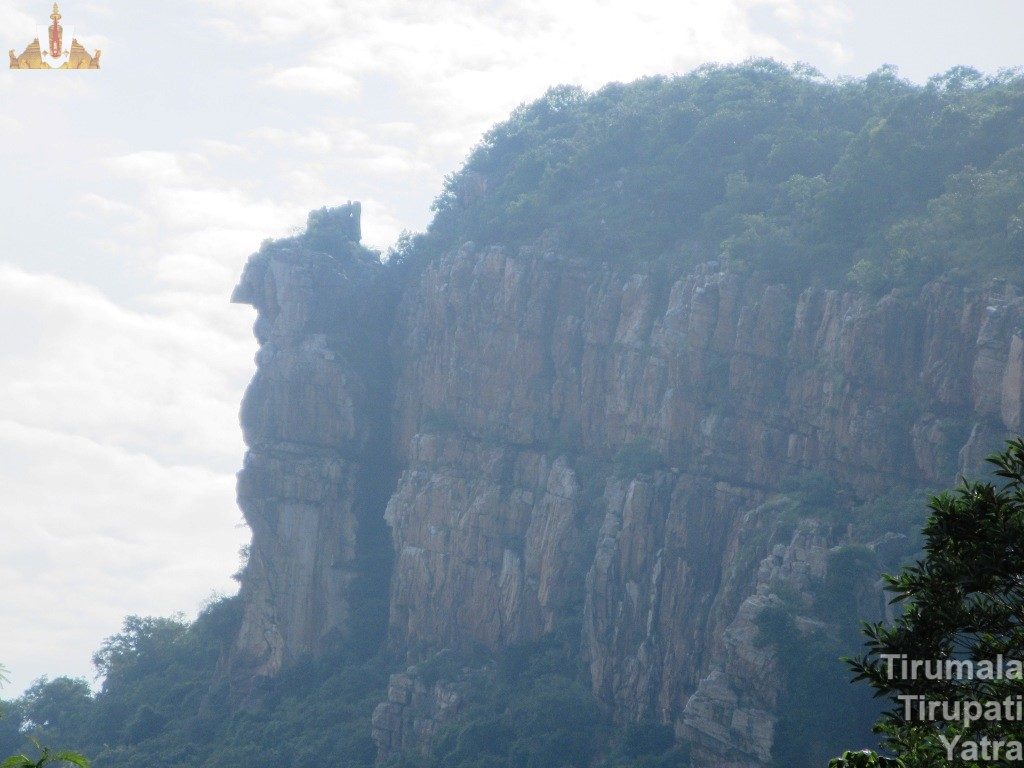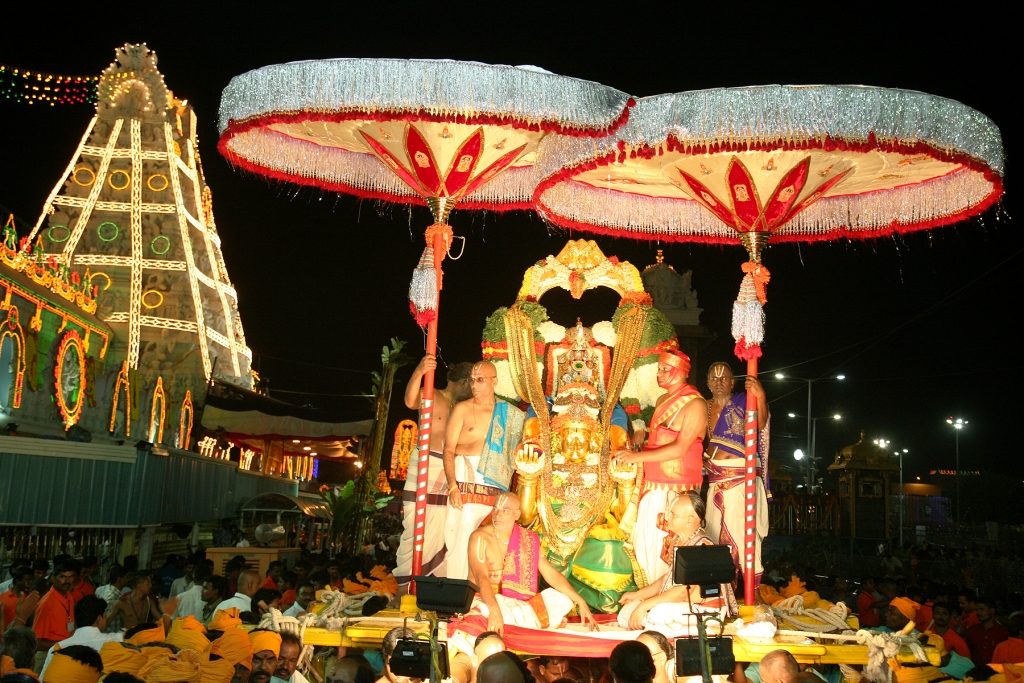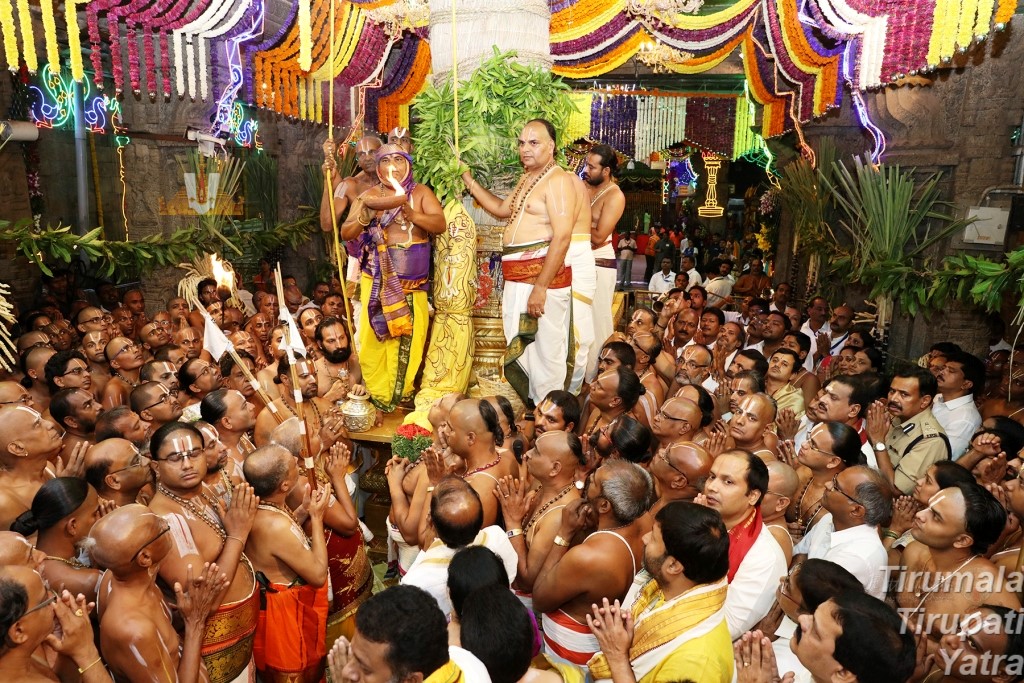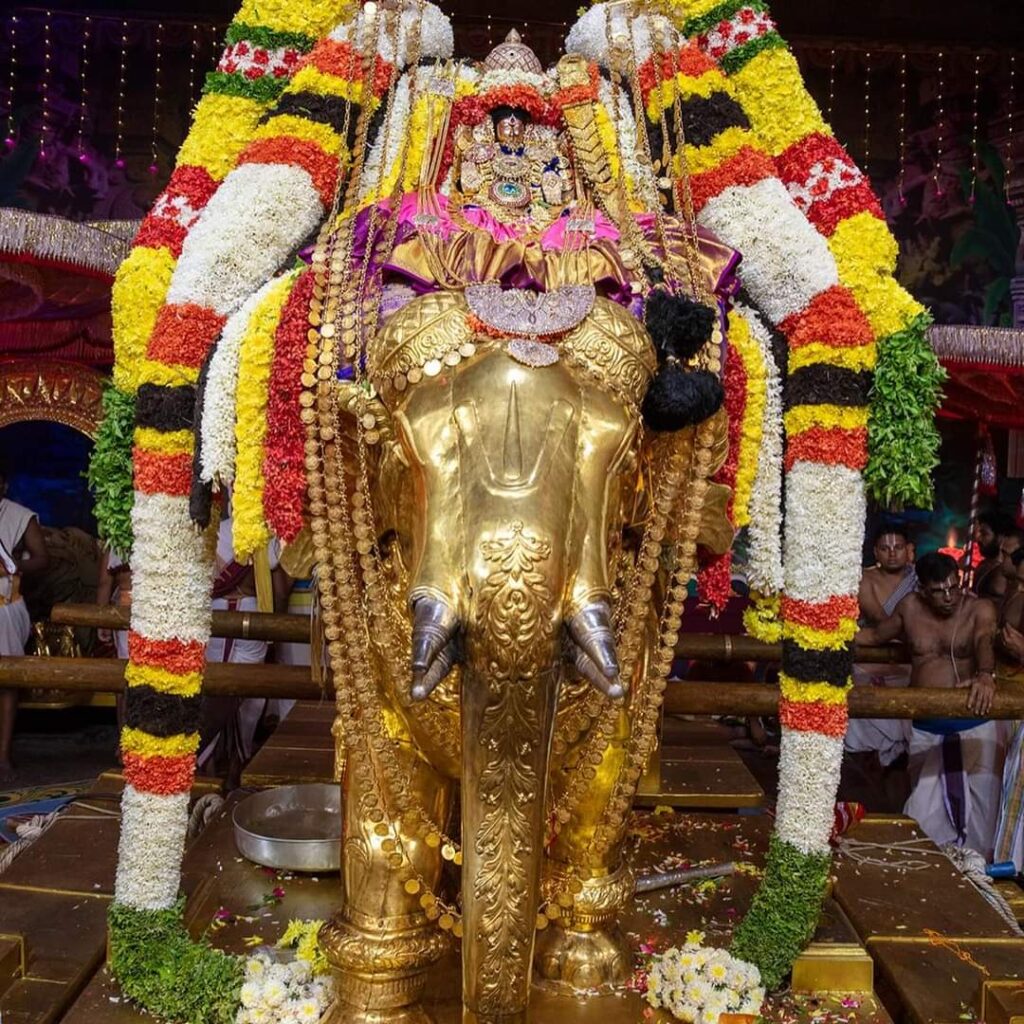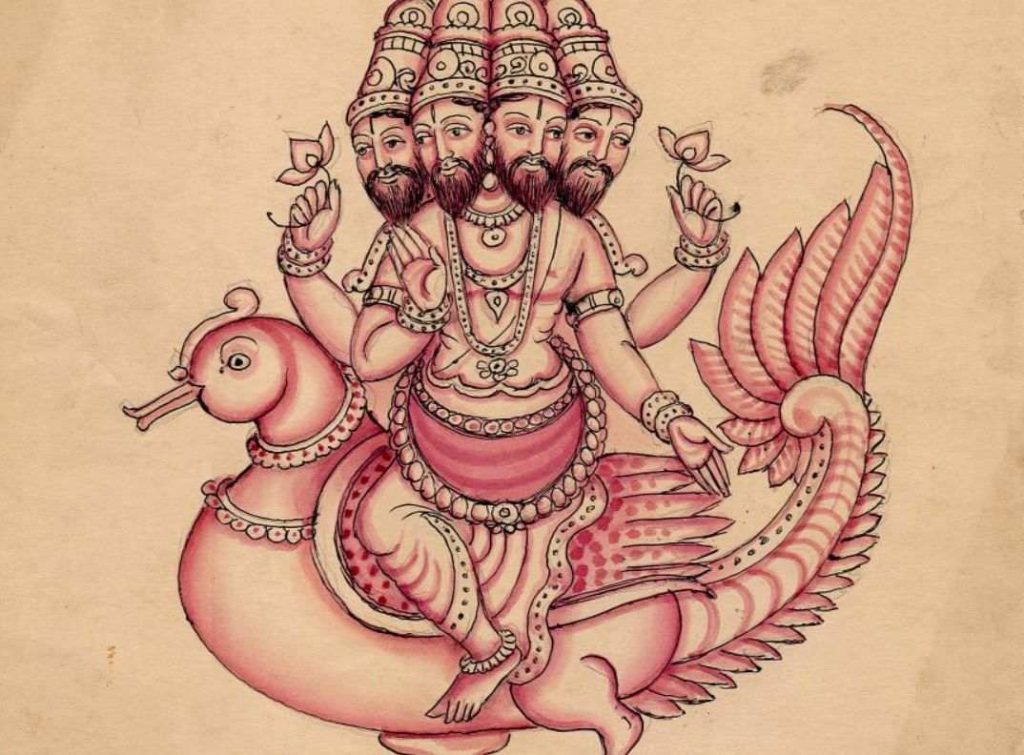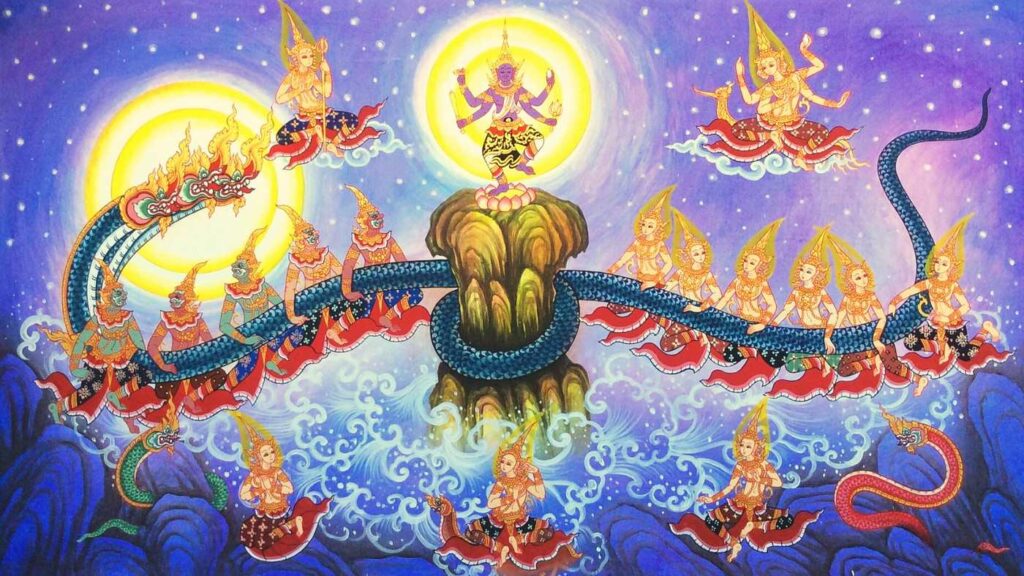Nandi Vahanam
As we have vehicles to call our own, the gods and goddesses of the Hindu Pantheon too have some such thing to call their own. Like ours, theirs too differ in shapes and sizes, and they take pride in riding upon them.
- While the pot-bellied and elephant-faced Lord Ganesa chose a mouse for a vehicle (vahanam),
- Lord Indra chose an elephant.
- While goddess Durga prided herself on riding a lion,
- Goddess Lakshmi preferred a floating lotus and an owl.
- And Lord Siva, the chief of the Trinity had a bull for his vehicle. And this bull of Lord Siva is known as ‘NANDI’.
Nandi is of a milky white colour though in several temples he is dark as the rock he is made of. As we park our costly vehicles outside our dwelling places, Nandi too becomes conspicuous by his position before the temples of Lord Siva.
The Chamberlain of Lord Siva, Nandi is also the chief of the Lord’s attendants, known as ‘Ganapatis’. And like the several names of Lord Siva, he too has a plethora of names by which he is called during worship. It is mandatory to say that these much-honoured and more revered vehicles of the deities are also worshipped by the devotees as they are especially dear to their lords.
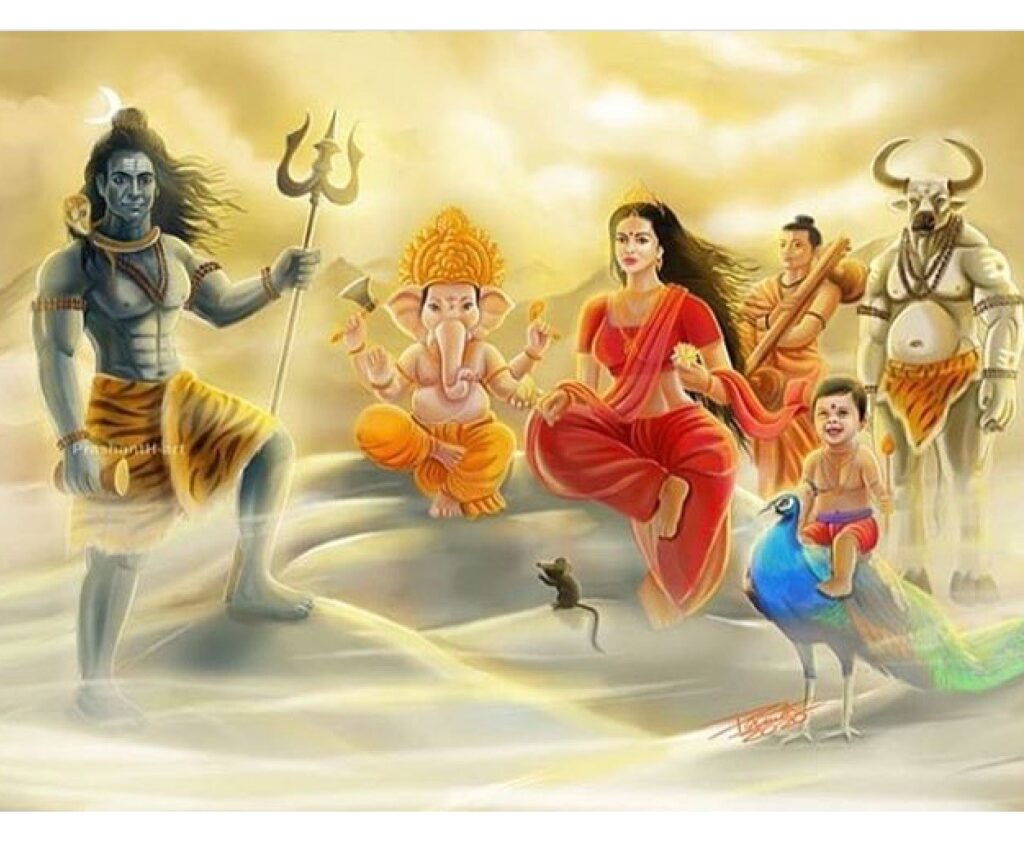
Siva temples – Stone Image of Nandi
As Nandi is the gate-guardian deity of Mt. Kailasa, the abode of Lord Siva, almost all Siva temples flaunt the stone images of a seated Nandi, generally facing the sanctum sanctorum, so that Nandi may perpetually gaze on the Lord. Since waiting is considered the greatest virtue in our culture, Nandi facing the Lord symbolizes eternal waiting.
This is not to say that he is waiting to take commands from the Lord. But he is only waiting…waiting forever, that forms the very essence of receptivity. And it is this receptivity that made Nandi, Lord Siva’s closest accomplice.
Nandi – Meaning
Speaking etymologically,
- the word ‘Nandi’ comes from the Tamil root word, ‘Nandi’ meaning “to grow, to flourish, or to appear”.
- The Sanskrit root word ‘Nandi’ means “happiness, joy and satisfaction”.
Either way, the character of Nandi fulfills these root meanings.
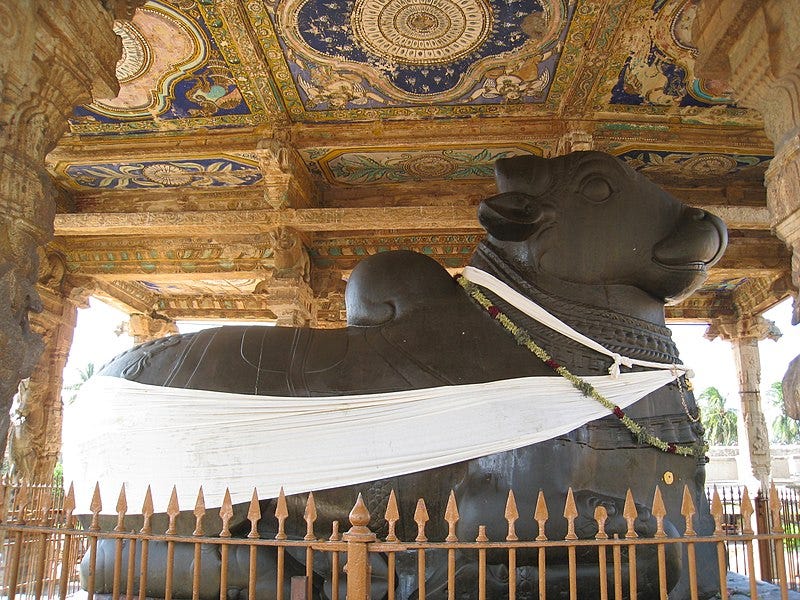
Some interesting stories from Siva Purana
Vayu Purana describes Nandi as the son of Kasyapa and Surabhi. Siva Purana tells the interesting story of how Nandi became Lord Siva’s closest accomplice.
Shilada, a sage, loved children but did not have any to call his own. He decided to adopt one and so meditated upon Lord Siva for many years. At last, Lord Siva listened to the sage’s prayer.
One fine morning the sage went to his field to plough and his great surprise, he found a charming baby behind the plough. Shilada was in a fix.
He then heard a voice from the sky, “He is a special child. Care for him. Bring him up to your satisfaction”.
Happy at heart, the sage took the baby home and named him Nandi. As he grew up, he proved to be a very precious child learning everything fast. The sage was very proud of the boy.
A few years rolled by. One day two rishis Mitra and Varuna visited Shilada. Shilada made their stay comfortable by entrusting the work to Nandi. Nandi too played his part well.
When it was time for the Rishis to continue with their pilgrimage, Shilada and Nandi prostrated before them to receive their blessings. “Have a long and happy life, Shilada. We enjoyed your stay”. But to Nandi, they said, “Be well…be learned.”
Shilada was taken aback. “Oh, beloved Rishis! Why didn’t you bless my son with a long life?”
The Rishis replied: “How can we? Nandi is destined to die when he is eight years old. It is fated thus”. They left with sorrow-laden faces.
Shilada felt his heart crumble at the words of the Rishis. But Nandi began to console his father. He told him that as an ardent admirer and devotee, he would pray to Lord Siva and beg Him to rewrite his fate.
“To meet Lord Siva is not as easy as you think. I meditated for a thousand years before I could get a darshan of him. You are already seven and how do you expect to meet Siva in the one year that is left to you?” asked the depressed father.
“I will manage. I will wait with devotion and faith”, so saying Nandi jumped into River Bhuvana and began his underwater prayers. His prayers were quickly answered. Pleased with the boy’s efforts to meet Him, Lord Siva appeared before him and asked what he wanted.
“I love you so much Lord that I want to remain devoted to you forever. Do not let me be born again, and die of old age.”
Pleased with the words of Nandi, Lord Siva granted his request by allowing him and his father to become residents of His Sivaloka. He transformed Nandi into half man and half bull and granted him immortality.
Apart from retaining Nandi as his perpetual companion, he made him ‘Ganapati’, the chief of His companions, known by the name ‘ganas’. And as a welcome gift, the Lord gave Nandi a wonderful garland to wear. Once it adorned his neck, Nandi became resplendent with three eyes and four hands.
Since then Nandi has become Lord Siva’s companion, door-man, and vehicle. It was by sheer devotion and waiting with faith, Nandi was able to overcome his fate. He rewrote it.
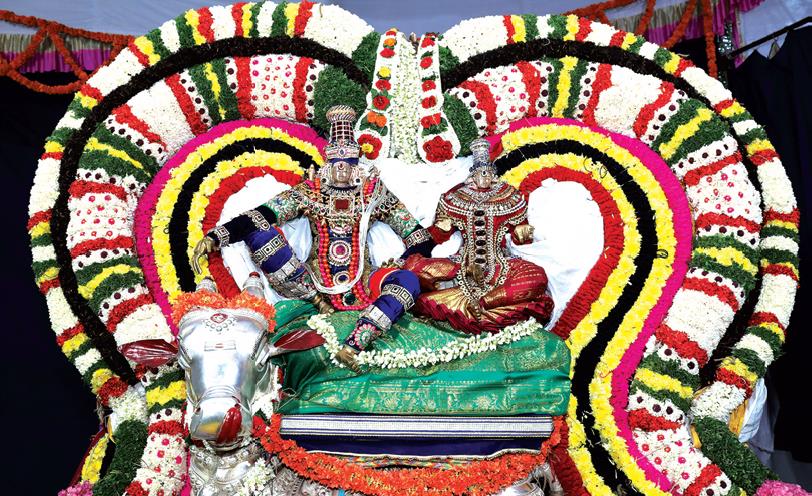
Nandi – the greatest devotee
Once it so happened that when the Devas and the Asuras churned the milky ocean for nectar with Mt. Mandara for the churning staff and serpent Vasuki for the rope, the first thing that emerged was the deadly poison called halahala. It could have easily destroyed the world, had not Lord Siva jumped into the fray. He collected the poison in his hand and swallowed it.
Panic-stricken Goddess Parvathi, Lord Siva’s consort, grasped her husband by his throat and thereby stored the halahala there so that the poison would not affect him. Lord Siva’s throat turned blue. However, a small quantity of poison slipped out of Lord Siva’s hands and fell to the ground. Following his master, Nandi licked and swallowed it up. Shocked stood the Devas for they were witnesses to Nandi’s action.
Nothing happened to Nandi. Lord Siva smiled and said to the Devas thus: “Nandi is my greatest devotee. All my powers are his too and my wife’s protection will go to him too.” Such was the affection Nandi commanded from his master Siva.
This story also proves that Nandi had immense strength and immunity, the gift of the Lord. No wonder the gifted bull is worshipped too. It is said that the pooja of Lord Siva would be incomplete without Nandi’s worship.
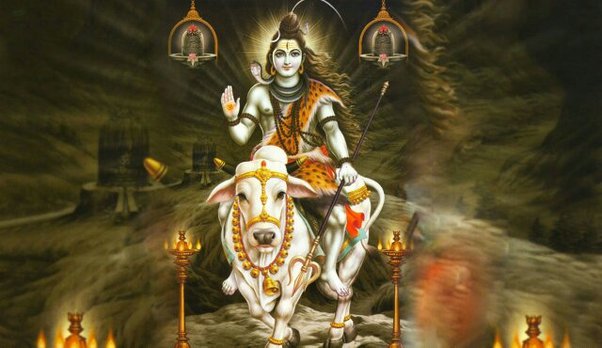
Conveyed the message
Once Parvathi lost her memory which very much disturbed her husband. Lord Siva started meditating with the noble intention of probing into the causes of her illness. Nandi too joined the meditation to ensure that he is connected with the Lord. This is why he sits in front of the Lord even today.
Jalandhar, an enemy of Lord Siva, stole this opportunity to abduct Goddess Parvathi. Neither was Lord Siva aware of this nor his companion Nandi. But the other deities who stood witness to the incident were unable to convey this news to Lord Siva. Hence they searched for Ganesa and hurried him up. But Ganesa failed to pull his father out of His meditation. An idea struck him. He went near Nandi and whispered all that he wanted to in his ears.
Nandi conveyed to his Lord all that he had heard from Ganesa. And Lord Siva came out of his deep meditation. Perhaps the custom of whispering into the ears of Nandi came into force from that day on.
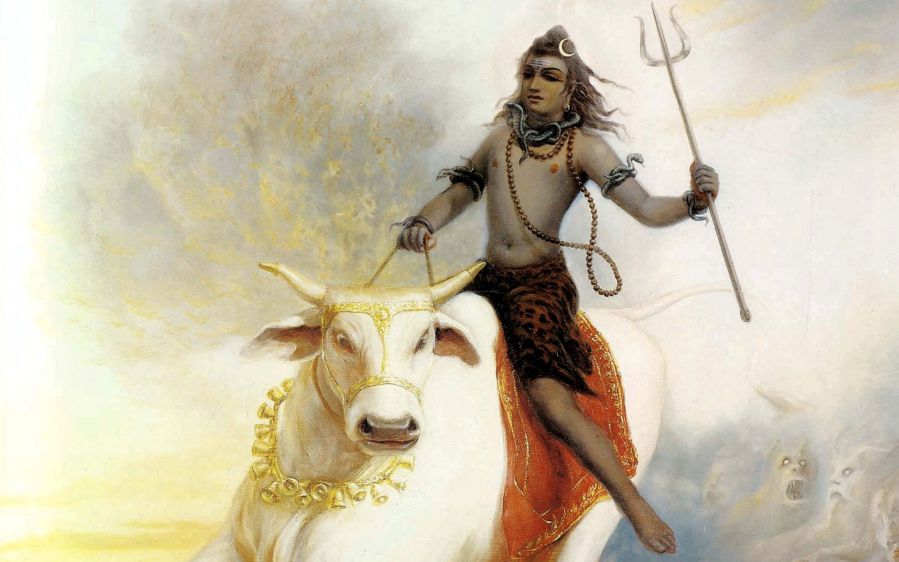
Turned the curse into a blessing
Nandi played many roles in the lives of the divine couple, to whom he was attached. Here is another interesting story.
The divine couple were playing a game of dice and the faithful Nandi played umpire (act as a judge). The game was over. Though Goddess Parvathi was a clear winner, the umpire declared that Lord Siva had won. Surely, he was partial to his Master.
Enraged, Parvathi cursed him. Grieved Nandi apologized and said, “My actions arose from devotion to my Master. Please be kind enough to release me from the curse”.
Goddess Parvathi finding a method in his madness sympathized with Nandi. She finally said: “Want a release from the curse? Then go and offer my son Ganesa all his favorite items and revere him on his birthday.”
Nandi faithfully followed the advice of Goddess Parvathi and turned the curse into a blessing. He pleased the elephant-headed Lord by offering him green grass (Darbha) on Ganesa Chaturthi day.
Since Nandi’s strength of mind and body was beyond question, he fought battles to help Lord Siva to be the victor. The Lord’s youngest son, Karthikeya who himself was a great warrior took Nandi’s advice before he entered any battle.
Thus Nandi became the favourite of Lord Siva’s entire family. It is in fitness of things that Nandi is given a place of great importance in all Lord Siva’s temples, especially in the South. He is seen as a humped white bull sitting on a raised platform and facing the entrance door of the shrine.
The message is that the soul (Nandi) should always be focused on the supreme power (Siva). The people have such a strong faith in Nandi that they believe he would come when they die and guide their souls to the holy land of Mt. Kailasa. Therefore, next time you come across a bull do not forget to feed him with green grass. Is not the purpose of this birth to achieve divine consciousness?
